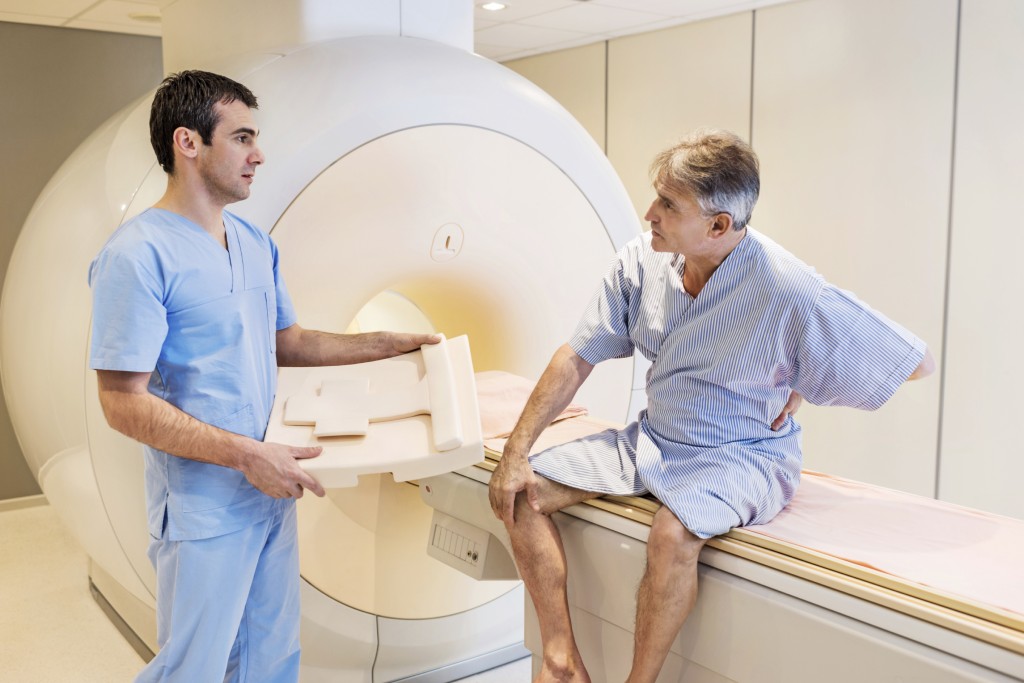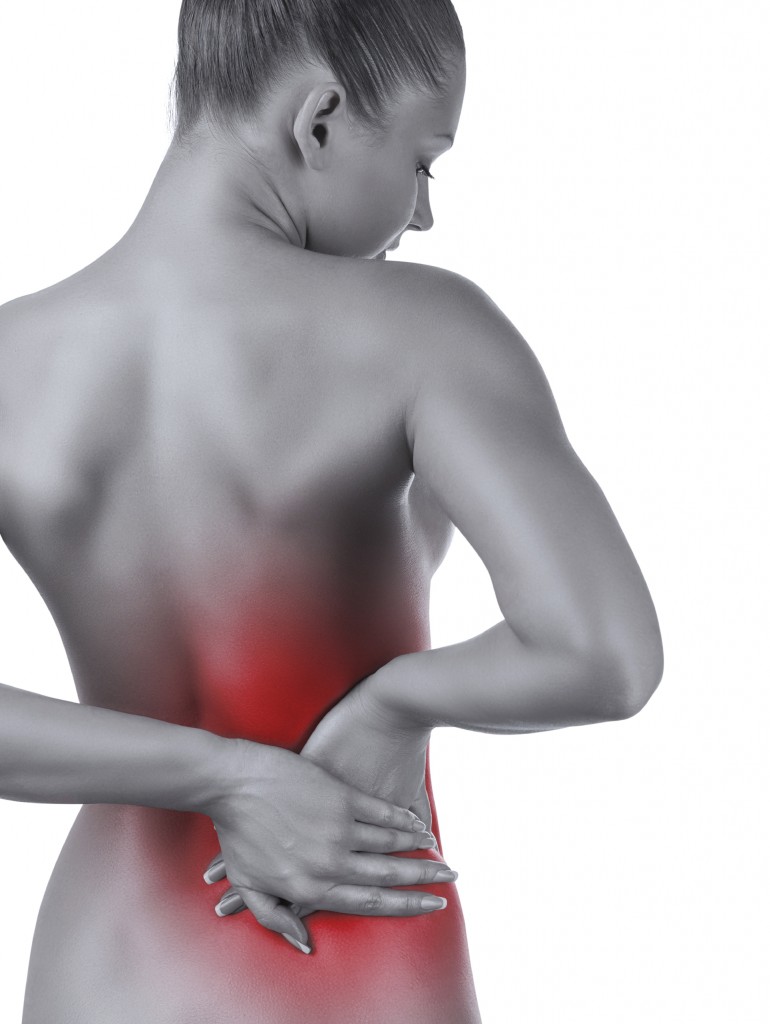New York Back Injury Attorney

The back contains a complex system of muscles, bones, cartilage, tendons, ligaments, nerves, blood vessels and more. This amazing structure provides the body with the support required to stand. The back bears much of our weight as we complete activities such as walking, running, lifting weights or other objects, and much more. Back injuries, particularly lower back injuries, are extremely common.
In fact, back injuries are the second most common complaint patients report to their doctors, following headaches. While 90 percent of all people who suffer back pain get better within one month, some patients can remain impaired by a back injury for years or permanently.
Common Back Injury Causes
Twisting or pulling the torso suddenly and with ample force can result in a back injury. Improper or repetitive lifting, which often occurs in the workplace, can also result in back injuries. Sports injuries can also cause back pain or injury.
Traumatic events—such as car accidents, work-related incidents, falls, acts of violence, and more—are also primary culprits that cause back injuries. In many cases, a traumatic injury is the “straw that breaks the camel’s back” so-to-speak, after repetitive stress has weakened the back.
When back injuries are the result of an accident caused by another party’s negligence or wrongdoing, the injured person may be able to seek back injury compensation for their losses and suffering with the help of a qualified and experienced attorney. If you have been injured at the fault of another, our personal injury attorneys at The Oshman Firm can evaluate your claim to determine the best way to protect your rights and interests.
Types of Back Injuries
Many types of back injuries exist, which vary in severity, intensity, duration, and consequences. Among the most common back injuries are strains, sprains, herniated discs, and fractures. Lower back injuries can result from any of the conditions mentioned below, including strains or a herniated disc.
Sprains and Strains
A back sprain is an injury to the muscles or tendons, while a strain is the stretching or tearing of the ligament(s) in the back. Tendons are the strong fibrous bands of tissue that connect the bones to the muscles. Ligaments are similar tissues, which connect two or more bones at a joint.
The most common symptoms of sprains and strains of the back can include:
- Pain, which often gets worse with movement,
- Uncontrollable cramping or spasming of the muscles,
- Reduced range of motion or decreased function, which can include trouble bending, standing straight, or walking
These types of back injuries are commonly diagnosed by a doctor based on a physical exam and the patient’s complete medical history. In some cases, an x-ray may be performed to diagnose or rule out fracture or herniated disc. Treating sprains and strains of the back is a two-phase process.
During the first day or two, a patient is often advised to rest, ice the affected area, and apply pressure (compression). Anti-inflammatory drugs may also be recommended to treat pain and reduce swelling. After 48 hours, patients are typically advised to resume most normal non-strenuous activities. These types of back injuries typically resolve within a few weeks with proper care.
If you or a loved one experiences any of the following symptoms, it is important to seek medical treatment immediately:
- The inability to walk more than a few steps, accompanied by severe pain
- Numbness below the site of the injury or down the leg(s)
- A lump or unusual shaped bump in the affected back area
- A history of numerous lower back injuries
- Pain that impedes normal sleep
Fracture of the Spinal Column
 The back houses the spinal column, a vertical structure of vertebrae, which protect the spinal cord and provide support and structure for the body. Major trauma, such as a car accident or fall, can result in a fracture of the vertebrae in the thoracic (middle) or lumbar (lower) back. In cases of more severe fracture, the spinal cord can suffer damage, which can result in impairment or paralysis to all areas of the body controlled by the damaged part of the spinal cord and below. The most common cause of spinal cord injuries is motor vehicle accidents.
The back houses the spinal column, a vertical structure of vertebrae, which protect the spinal cord and provide support and structure for the body. Major trauma, such as a car accident or fall, can result in a fracture of the vertebrae in the thoracic (middle) or lumbar (lower) back. In cases of more severe fracture, the spinal cord can suffer damage, which can result in impairment or paralysis to all areas of the body controlled by the damaged part of the spinal cord and below. The most common cause of spinal cord injuries is motor vehicle accidents.
Symptoms of a fractured vertebra can include:
- Moderate to severe back pain, which is often worse with movement
- If damage to the spinal cord occurs, a patient may experience tingling, numbness, weakness, and/or trouble with bladder or bowel control.
The vertebrae can fracture in a few ways, by which doctors use to classify the back injury. Types of vertebral fracture include:
- Flexion/distraction (chance) fracture: in this type of back injury, the vertebra are pulled apart from one another. This can occur in a head-on collision, during which the upper body is violently propelled forward, while pelvis and lower body remain stabilized by a seat belt across the lap.
- Compression fracture: With this fracture, the front of the vertebra breaks and loses height, but the back part of the vertebra doesn’t. This type of back injury is typically stable and is not commonly associated with neurological complications.
- Axial burst fracture: When the vertebra breaks, height is lost in the front and back parts. This type of back injury is commonly the result of falls where the person lands on or breaks their fall with their feet.
- Fracture-dislocation: With this type of back injury, one vertebra may move off the other adjacent vertebra, resulting in an unstable injury affecting the bones and/or surrounding soft tissues.
- Transverse process fracture: Rotation or extreme twisting movements during a traumatic event can result in this type of fracture.
Diagnosing a vertebral fracture is done after a careful and thorough medical examination. It is important for anyone who suspects a spinal injury to seek medical treatment, especially if the possible symptoms of spinal cord injury are present. A healthcare provider will start by checking a patient’s vital signs to make sure that damage to the heart, lungs, or other structures has not occurred.
The doctor will then locate the fracture and assess the damage. S/he will determine the type of fracture and check for spinal instability and nerve injury. While the patient is immobilized on a spine board, the physician will check for bruising, swelling, loss of sensation or function, motion and alignment of the limbs, tenderness in the rib areas, and more. MRI, CT scan, and X-rays may all be used to evaluate the patient’s back injury.
A neurological assessment should also be performed to determine if any damage was caused to the nerves or spinal cord during the accident. Sensory, motor, and reflex functions may be tested during this evaluation.
Relaying every known detail about the accident can help a doctor make an accurate assessment and provide proper treatment.
Many fractures in the back require surgery, though not all. Some compression and burst fractures may require compression, via a special brace, and activity restriction for a period of weeks or months. More serious back injuries require aggressive surgical treatment.
Surgical treatment for fractured vertebra can correct an unstable fracture, re-align the vertebrae, and hold it together properly with the help of spinal fusion and/or metal plates and screws. Before undergoing back surgery, it is wise to get a second opinion from another qualified practitioner who specializes in treatment of the spine and back.
Back Injury Compensation
If you have suffered a back injury due to the fault of another party or have suffered a back injury at work, you may be eligible to file a legal claim to seek back injury compensation, including your medical expenses, lost income, pain and suffering, and more. A qualified attorney can evaluate your case to determine the best way to protect your legal interests. Whether through a back injury settlement or trial verdict, back injury compensation can help you recover your losses. Please contact us today to speak with a qualified back injury attorney at The Oshman Firm at no charge.
Contact us today at 1-800-400-8182, or contact us online for a free case evaluation. Our firm utilizes the contingency fee system, where we not only provide free consultations, but never charge a fee unless we are successful in obtaining a settlement or jury verdict on your behalf.
